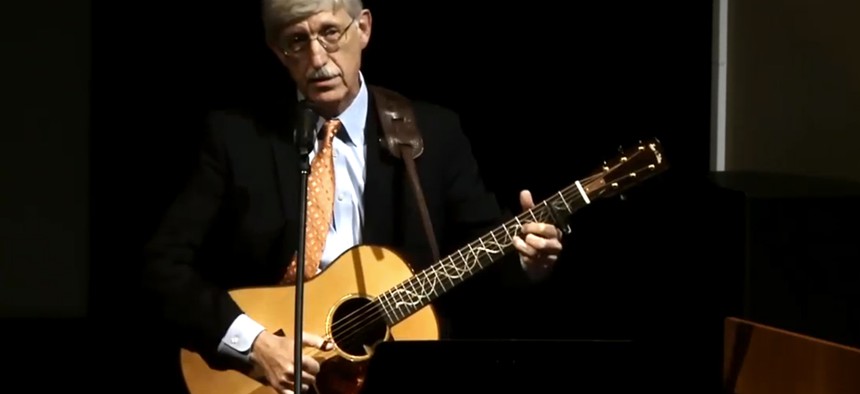At NIH, Biomedical Research Is Enough to Make You Break Into Song
The Common Fund celebrates 10 years of transformative science.
Happy 10th anniversary to the National Institutes of Health’s Common Fund! It’s hard to believe that it’s been a decade since I joined then-NIH Director Elias Zerhouni at the National Press Club to launch this trans-NIH effort to catalyze innovation and speed progress across many fields of biomedical research.
Allow me to take this opportunity to share just a bit of the history and a few of the many achievements of this bold new approach to the support of science.
Let’s start with the history. In 2003, Dr. Zerhouni, who served as NIH director from 2002 to 2008, and the leaders of NIH’s 27 institutes and centers (I was the Director of the National Human Genome Research Institute at the time) sat down to develop a plan we dubbed the NIH Roadmap. This plan outlined a series of ambitious goals aimed at encouraging the development of innovative technologies and research tools, with the potential to produce revolutionary advances in many fields of biomedical science. These were multidisciplinary goals that would benefit many different kinds of research, but couldn’t readily fit into the plans of any single institute or center.
To support this vision, NIH needed to create a new funding mechanism that transcended existing organizational boundaries. So, we decided that each year every institute and center would contribute 1 percent of its annual budget to a designated fund within the NIH Office of the Director. In 2006, when Congress provided language to establish this fund as an official line item in the NIH budget, the name NIH Roadmap gave way to the NIH Common Fund.
Since I started this blog a couple of years ago, I’ve featured a lot of transformative research that has been the focus of Common Fund efforts, including the Human Microbiome Project, Big Data to Knowledge, Extracellular RNA, Nanomedicine, Epigenomics, Undiagnosed Diseases Program, and High-Risk, High-Reward Research. Some of these advances have already transformed the way we do science and expanded our understanding of human health and disease—and others are sure to do so in the future.
Consider the impact of just one of these projects: the Human Microbiome Project, which aimed to characterize the microbes inhabiting the human body—including nasal passages, oral cavities, skin, gastrointestinal tract and urogenital tract. The first phase of this project gave us a census of many of the microbes living in and on us, revolutionizing the way we view ourselves. No longer can we think of ourselves as isolated organisms. Rather, each one of us is an ecosystem teeming with microbes that influence our health status in ways we’re only beginning to appreciate.
In addition to funding collaborative projects that involve hundreds of scientists supported by several institutes, we also use the Common Fund to support the High-Risk, High-Reward Program, which funds individual scientists with particularly innovative ideas or transformative technologies that, because of their novelty, may lack the preliminary data typically used to evaluate NIH grant proposals. For example, two such researchers, Karl Deisseroth of Stanford University and Edward Boyden of MIT, received the NIH Director’s Pioneer and New Innovator awards respectively to develop a method for controlling the activity of neurons with light. Their high-risk projects launched the field of optogenetics, which has revolutionized the study of neuroscience. I’ve profiled many of the 2013 HRHR awardees in my Creative Minds series of blog posts. Along with winners from past years, this represents an absolutely amazing group of scientists. Who knows how many new fields they will launch?
To celebrate the past decade of discovery, we recently hosted the Common Fund Symposium today. The symposium featured talks by Dr. Zerhouni, now President of Global R&D at Sanofi, as well as many of the remarkable scientists who have led the large multidisciplinary projects or who have received HRHR awards.
Over the course of the day, we revealed the winners of the first-ever Common Fund video competition, in which researchers describe their work to the public in some wonderfully creative (and sometimes humorous) ways. If you only have time to watch one of these productions, let me recommend this one on Alzheimer’s disease research that’s being honored as the “NIH Select” video.
Finally, if you watch the videocast to the end of the symposium, you might even catch me singing a song written by a Common Fund researcher for the song contest and dedicated to all who have made—and will continue to make—this endeavor such a resounding success for biomedical science.
Onward!




